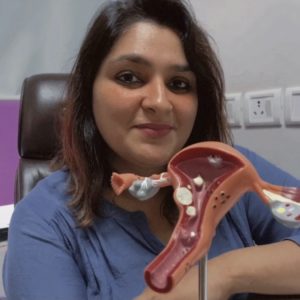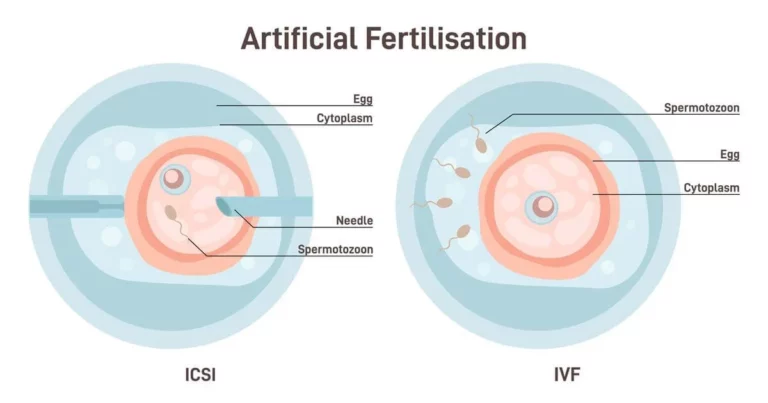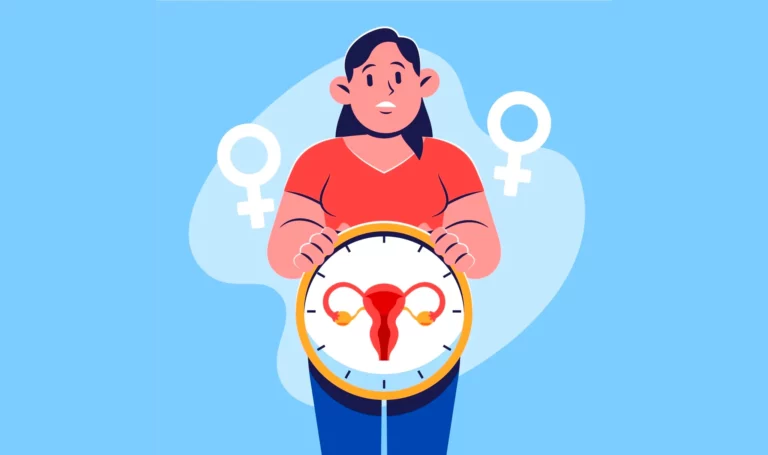In the journey of creating a new life, understanding the roles of sperm and ovum is key. In this article, we will explore what sperm and ovum are, when and how they meet to start the process of creating a baby, and the ways they are different.
Sperm and Ovum: Buildings Blocks of Life
Sperm and ovum are essential in the process of creating a new life. Sperms produced in the male tests are small, fast swimmers that carry the genetic matter while ovum or eggs are larger cells produced by female’s ovaries that provide a nurturing environment for fertilization and development of pregnancy. Here is a detailed
What is Sperm?
Sperms or spermatozoa are the tiny male cells that are responsible for fertilizing the ovum. Made within the testicles through a process called spermatogenesis, sperm undergoes an extraordinary journey from their inception to the moment of fertilization. Anatomically, they have a head, midpiece and a tail. The head contains the genetic material in form of chromosomes, the midpiece contains the mitochondria to provide energy for flagellum, and the tail that helps it to swim towards its destination.
Despite their extremely small size, they are remarkably motile, allowing them to navigate effectively through the complex female reproductive tract (from the cervix, uterus, and the fallopian tubes) to the viable ovum.
What is Ovum?
Also called eggs, ovum are the female cells that play a role in reproduction. They are produced by the ovaries during ovulation (middle of the 28-day menstrual cycle). Ovum do not move on their own but rely on the body’s natural processes to reach the fallopian tube where it awaits sperm for fertilization.
Lifespan of Ovum and Sperm
The viability and lifespan of both sperm and ovum is crucial in the process of conception. Compared to sperms, ovum are larger reproductive cells produced by females while having a relatively shorter lifespan. Upon release, an ovum is viable approximately for the next 12 to 24 hours. In contrast, sperm are extremely small reproductive cells produced by males that have a comparatively longer lifespan than ovum. They are viable in the female reproductive tract for up to 5 days after being ejaculated.
In order to induce a pregnancy, it is crucial for both male and female to understand the importance of this brief lifespan window and how to appropriately time sexual intercourse so that sperm can reach the ovum while it is viable.
As mentioned, following ejaculation, sperms can survive in the female’s reproductive system for up to 5 days where it waits for the female’s ovaries to release an egg or ovum. Once an egg is released and travels down the fallopian tube, the female’s reproductive system releases certain chemical signals that help sperms navigate through the cervix to uterine tube where the ovum awaits fertilization. When they meet, sperm-cell penetrates the top layer of the egg and fuses with it to form a zygote that later develops into an embryo, and gradually into a fetus.
Sperm and Ovum Fusion: The Fertilization
When we talk about the fusion of ovum and sperm which is called fertilization, it may sound pretty straightforward — sperm meets the ovum. However, the process is pretty complex, has several stages and takes days. The fertilization itself starts way before the fusion of these male and female gametes.
Here is a step-by-step explanation of the complete process of conception or fertilization.
1. Ovulation
It all starts when one of the woman’s ovaries’ releases a mature egg (an ovum) during her menstrual cycle, typically in the middle of this 28-day period.
2. Ovum Travel
Once the ovum is released, it starts its travel towards the uterus. This journey itself takes several days.
3. Intercourse
When a couple engages in sexual intercourse, usually around the time of ovulation, the male ejaculation delivers millions of viable sperms into the woman’s reproductive tract.
4. Sperm Travel
The released sperms now start their journey towards the uterus, through the cervix to uterine tube where the ovum is awaiting fusion.
5. Fertilization
If sperm reaches the fallopian tube and the ovum is still viable, fertilization may take place. This involves the sperm penetrating the outer layer of the ovum and fusing with its cytoplasm. This fusion then forms a zygote which contains a combined genetic matter of both the sperm and ovum.
Well, several studies have concluded that certain health and lifestyle factors have degraded the chances of natural conception in certain couples. And, assisted reproductive technologies (ARTs) may be required for such infertile couples to be able to conceive. In this matter, proper fertility assistance from a good IVF center in Jammu may help such couples successfully achieve and maintain a pregnancy through techniques such as in-vitro fertilization (IVF), intrauterine insemination (IUI), or intracytoplasmic sperm injection (ICSI).
6. Zygote Formation
Once the zygote has formed, it starts to undergo rapid cell division while traveling from the fallopian tube to the uterus where it will soon implant once it reaches the blastocyst stage (a cluster of cells, called the early stage embryo).
7. Implantation
Soon the blastocyst reaches the uterus, it attempts to implant itself onto the lining of the uterus wall. This process is called implantation, which typically occurs 6 to 10 days after fertilization.
8. Pregnancy
When the blastocyst successfully implants, it continues to develop and form an embryo and then a fetus. Now, the pregnancy has occurred and conception is successful. The woman’s body will go through several changes to facilitate fetus development.
9. Birth
Approximately 38 to 42 weeks after conception, the woman is ready for childbirth. The labor will begin and the mother will give birth to the child through her birth canal.
Difference Between Ovum and Sperm
When we differentiate between sperm and ovum, here are some fundamental differences that include:
| Basis | Sperm | Ovum |
| Size and Structure | Sperm cells are extremely small in size and distinct in shape. They have a head that contains the genetic material, a midpiece that contains mitochondria for energy, and a tail for reaching the viable egg. | Compared to sperm, ovum (eggs) are larger cells. They are spherical in shape and visible to the naked eye. |
| Origin | Sperm are produced in the male testicles through the process called spermatogenesis. The male body produces millions of viable sperm cells everyday and stores them in epididymis until ejaculation. They travel to the ovum based on its chemical signals. | Ovum are produced within the ovaries, through a process called oogenesis every month in the middle of the 28-day menstrual cycle which is called ovulation period. An ovum is released by one of the ovaries and it awaits fertilization in the fallopian tube. |
| Role in Fertilization | Unlike ovum, sperm are responsible for delivering the genetic material to the egg. They travel through the cervix, to the fallopian tube to penetrate the egg’s outer membrane and fuse with cytoplasm to induce fertilization. | The primary role of ovum is to provide a nurturing environment for fertilization and contribute its genetic material for the development of the zygote. The egg, once released from the ovary, travels down to the uterine tube, where it awaits for the sperm to penetrate and fuse with its cytoplasm to induce fertilization. |
| Lifespan | Sperm can survive up to 5 days in the female’s reproductive tract after ejaculation. | Unlike sperm, eggs have a relatively shorter lifespan which is around 12 to 24 hours after being ovulated. If not fertilized during this viable period, it is disintegrated and reabsorbed by the female’s body. |
| Genetic Contribution | Sperm carries the genetic material, one X or Y chromosome from the male parent, which contributes to deciding the sex of the offspring. | Ovum carries the genetic material, one X chromosome from the female parent, to fuse with male parent’s contributed chromosome and form a zygote. |
| Motility | Sperm have a tail (flagellum) that allows them to swim through the female reproductive tract in search of the egg. They are highly motile. | Ovum are immotile and rely on the body’s natural processes like ovulation and contraction of the uterine tube to reach the uterus after fertilization. |
| Number Produced | A male body produces sperm in large quantities regularly. Each ejaculation has millions of viable sperm-cells. | Unlike sperm, women have a limited number of mature eggs to produce throughout their lifetime. A woman only produces only one mature and viable egg during each menstrual cycle, called the ovulation phase. |
| Maturation Process | Sperm mature in the epididymis after being produced in the testicles. They gain fertility and motility during their maturation. | On the other hand, ovum matures in the ovary before being released. This maturation takes place in the ovarian follicle that contains immature eggs that mature one egg every month and releases it into the fallopian tube. |
| Environmental Need | Sperm are adaptable and can survive in different conditions within the female reproductive tract. | Ovum is highly influenced by the environment. It requires a specific environment to fertilize; which includes presence of cervical mucus to facilitate sperm’s travel to the fallopian tube and a receptive endometrial lining for successful implantation. |
The Bottom Line
Sperm and ovum are the building blocks of life. They come together and form a zygote that later develops into an embryo and then a fetus, creating a new life, an offspring. This article focused on discussing these two; what they are, their viability and lifespan, how and when they meet, and how they are different from each other.








